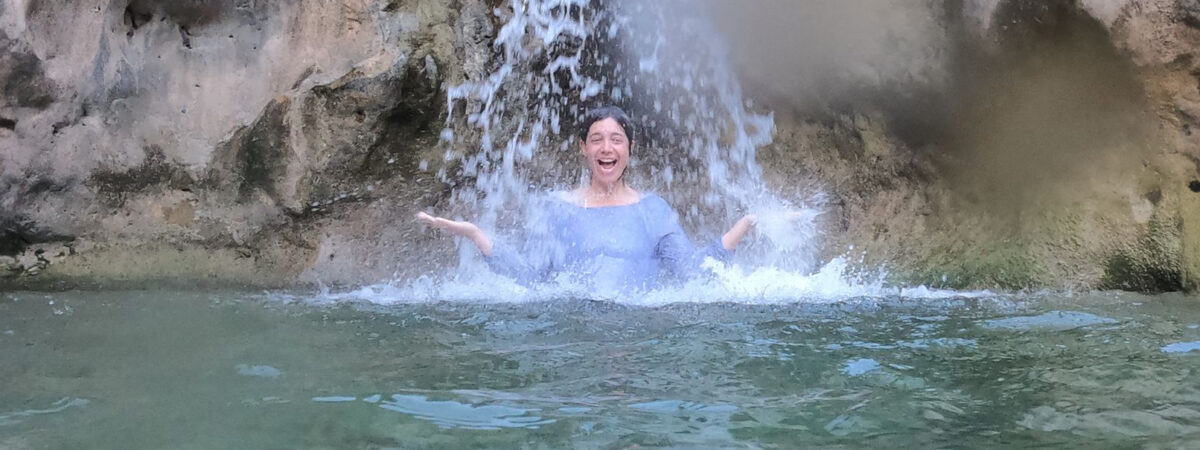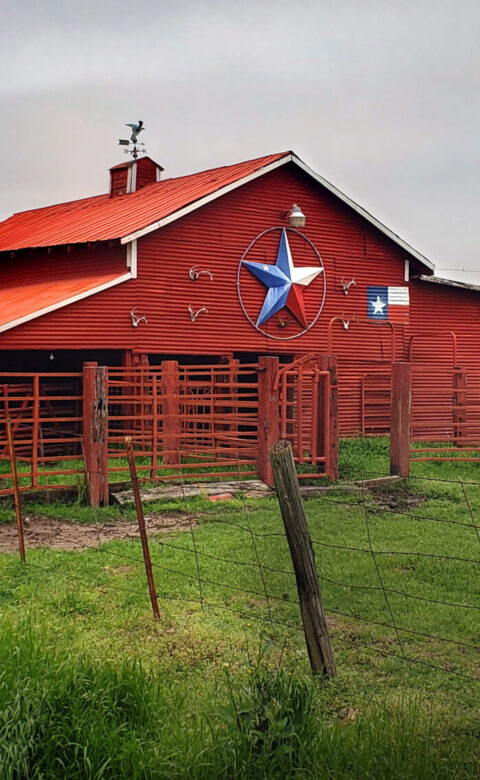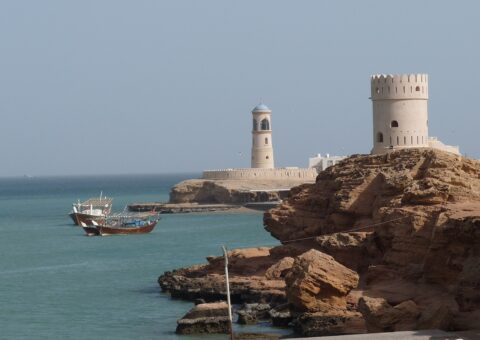Taking in the mountains, dates, and palm trees while sitting on the steps, listening and watching the gurgles of water from the waterfall, I smile while thinking how soothing nature is. I’m chatting with one of the locals at Wadi Tiwi in Oman, while he’s waiting for some tourists to finish swimming.
He asks me, ‘Why aren’t you working today?’ I laugh and say, ‘I do not have to teach today.’ Two minutes later, another local arrives with two tourists, and he asks me the same question. He disappears down the stairs to show his group the rope they need to descend five metres into the first turquoise-coloured wadi — a pool of water.
Welcome to Wadi Tiwi, about 25 minutes north of Sur. It is known for its waterfall, and there are a few ways to reach it. Some drive about 15 minutes to the top of Mibam Village and then walk down nearly 300 cement steps with lush date, banana, and mango trees on either side. Others park halfway at Sima Village and walk through farms or on another path, which requires going around boulders on a loose rocky trail with some parts flat and some hiking uphill.
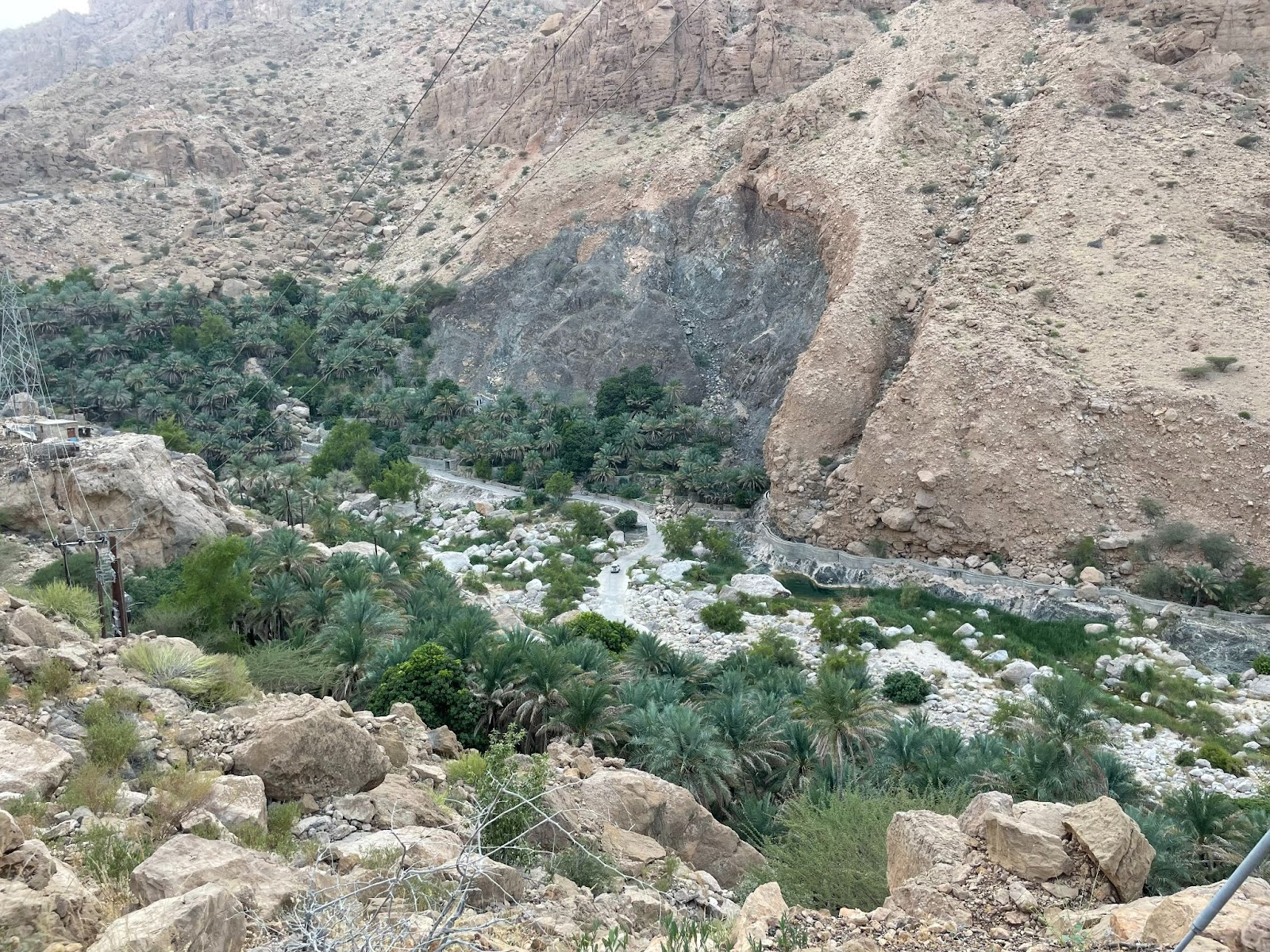
My friends and I usually like to park at the bottom and challenge ourselves with a 14 km return trip by hiking along the road with steep hills and mountains in our background. Or we take shortcuts through farms that contain fruit trees, like papaya and banana, as well as date trees. The only sounds sometimes are chirping, crowing, and croaking, allowing one to relax and forget about everything.
We also take the loose rocky path after Sima to reach Mibam. Pausing and looking down at the boulders, shrubs between rocks, palm and date trees, and glimpses of small pools of water while hearing faint burbles echoing from afar has this hypnotic effect. Nature pulls one in, saying, ‘You’ve got this’, while the waterfall continues, ‘See you in about 45 minutes.’
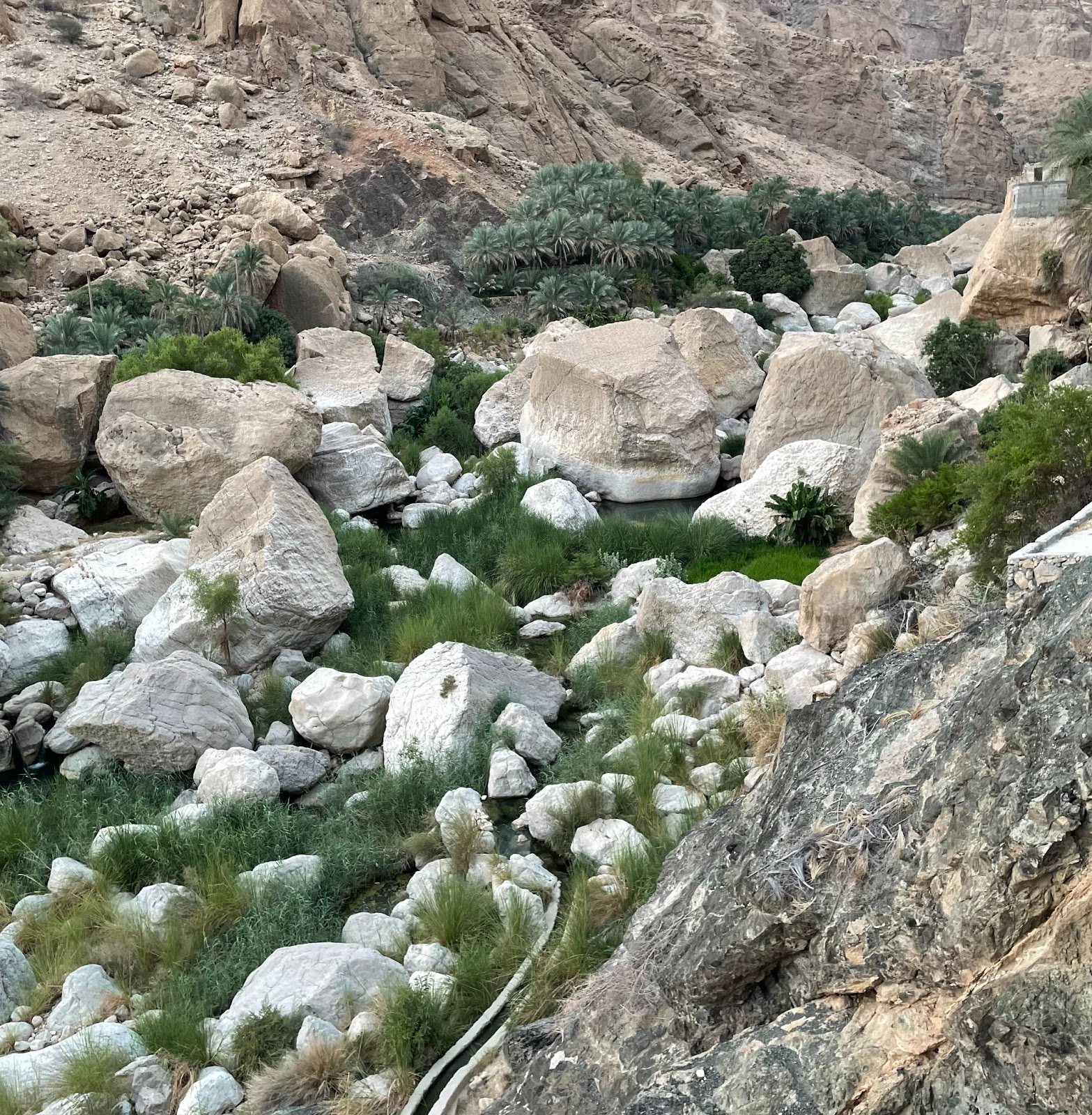
The locals always smile when passing them, saying ‘Salim Alikum’ (hello). When reaching the halfway mark of Sima Village, there are usually dates and coffee for everyone to enjoy. Roughly 14 white and beige squared homes are here, with some traditional ones built with mud and bricks. Six or seven date trees peek over the white cement wall on the other side of the houses. One will see farms below the wall with flourishing banana and papaya trees.
My friends and I have had Iftar, the first meal after breaking fast during Ramadan in Sima village, and we have had others invite us to rest, have coffee and dates before hiking back to our car. On one of my first visits, some women at Mibam Village asked my friends and me to take a break. They gave us Sewaiya — a sweet vermicelli noodle with hints of sugar and rose water; fruit, dates, and coffee. We felt grateful for this kind gesture.
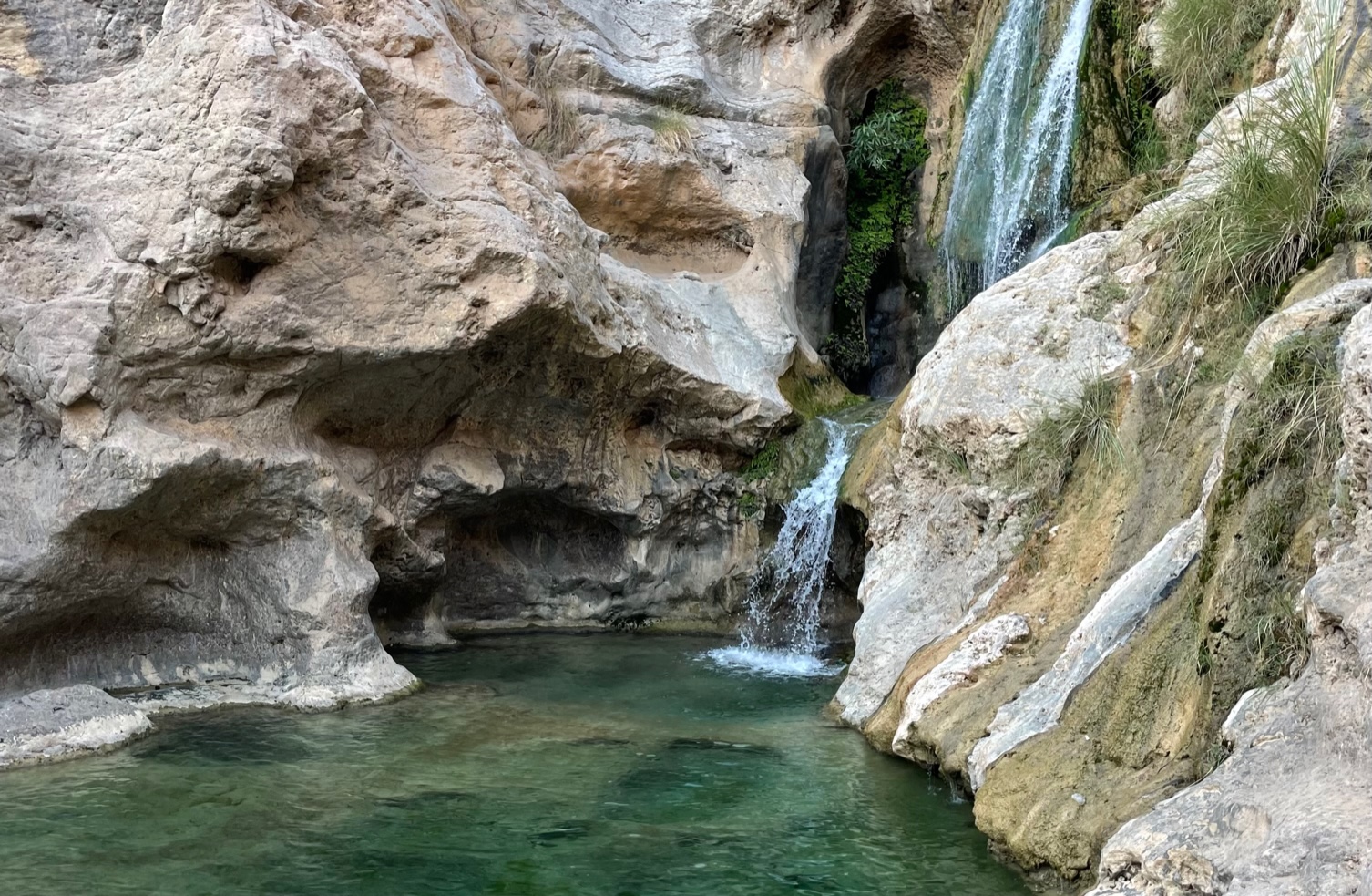
When I think I have taken all the routes inside Tiwi, I seem to stumble on a new path. Once, my friend and I were walking and came upon a turquoise and sea-blue pool of water. The large palm trees covered the glistening surface, almost as if the leaves were hugging and protecting this boxed-shaped pool.
A local sitting down told us that we could swim here anytime. I did not want to leave this peaceful spot with the music of only chirping and croaking. The trees’ reflection in the water, with slight glimpses of mountains in the background, was incredible. I told myself this would be an excellent spot to meditate and relax.
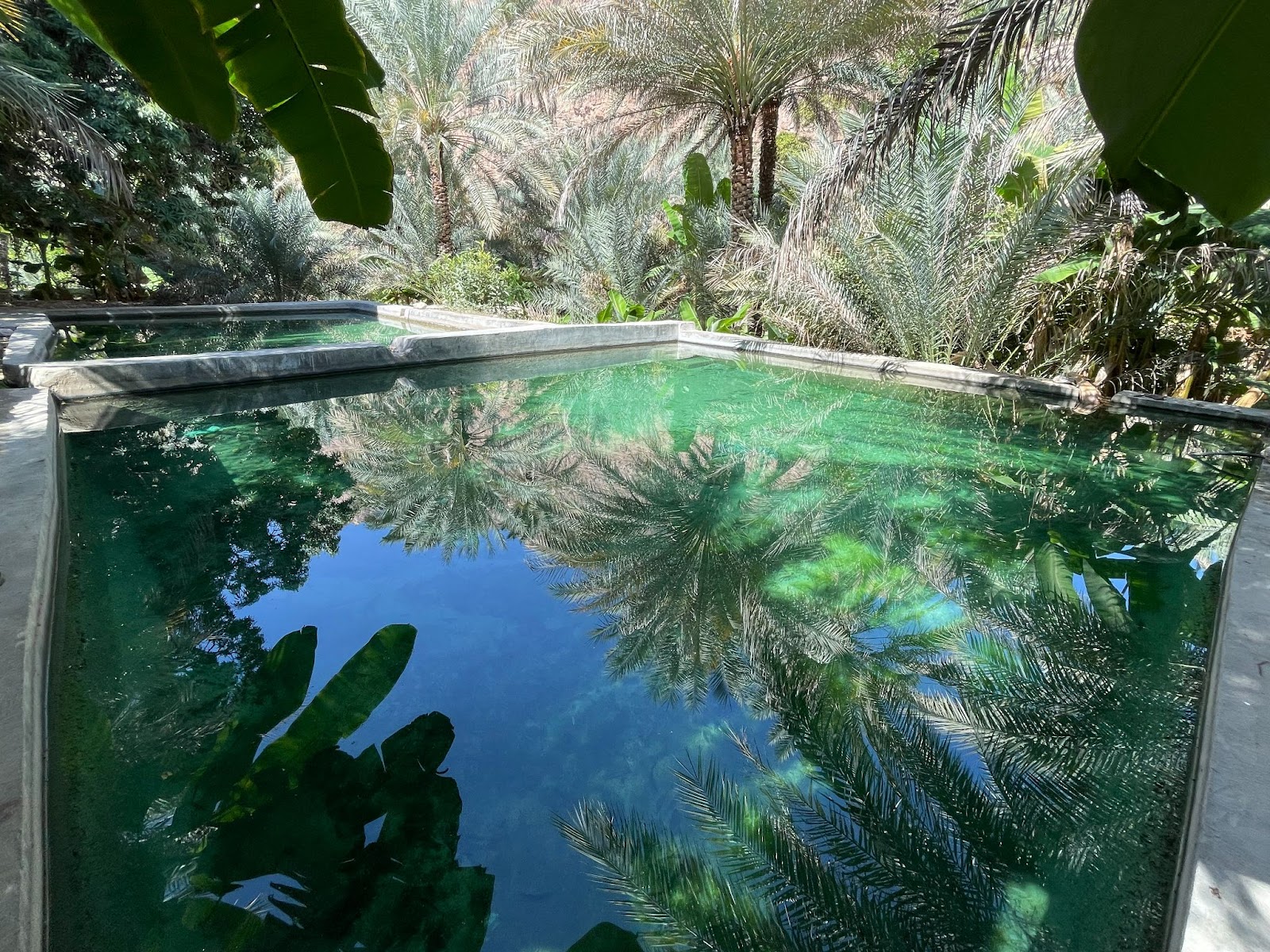
Wadi Tiwi is undoubtedly a special place. When I need nature, want to exercise, or feel stressed, this is the first place I visit. It is as if the scenery is looking at me and whispering, ‘Welcome back. We know you will feel refreshed after your visit.’ Something is calming about seeing the significant date and palm trees or climbing around the unusually shaped boulders. A bonus is the waterfall, which removes any aches when setting foot inside the turquoise pool. The droplets pounding on one’s shoulders make for an excellent massage.
No matter how often I come here, I am always fascinated when I walk along the filaj, a type of underground system that transports water through canals. While I get my phone out for a photo, I laugh and think, ‘How many pictures do I have of this filaj or other scenes from Tiwi?’ It still does not prevent me from clicking away.

I asked four frequent visitors and one local from Sima Village what makes Tiwi unique.
‘A hike here gave me a better workout than going regularly to gyms. The fresh air and greenery are a bonus.’ Tung Chi
‘Wadi Tiwi contains farms, trees, stunning landscapes, freshwater, and old residential villages.’ Mohammed
‘It is the perfect blend of physical activity, the wonders of nature, and vibrant colours that nourish the body, mind, and soul.’ Kerissa
‘Tiwi has its own magic and amazes me every time I set foot on its trail. I feel detached from reality.’ Khadija
‘It is one of those places that seems like it should not be real. It has this feel as if it were trapped in time.’ Koketso
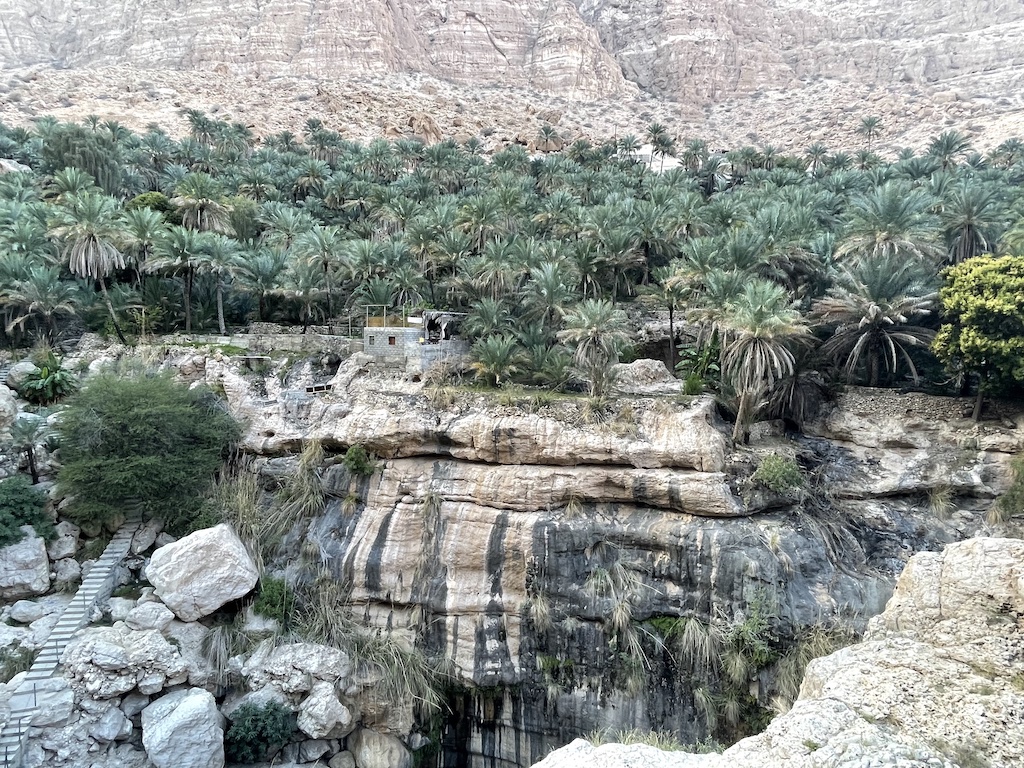
In addition to Wadi Tiwi’s hospitality, one will find this generosity anywhere. On other hikes, locals have given us food, such as mandazi — a type of triangular-shaped fried bread, and halwa — a sticky, jelly-like sweet mixed with ghee, sugar, cornstarch, and sometimes cardamom. Expect people to welcome you and say, ‘Oman is your home.’ The hospitality is endless.
As for Tiwi, the mystical wonder continues to surprise me, and each visit feels like my first time. The friendly and hospitable locals, the refreshing waterfall, and the scenery make this a remarkable place. As I plan my next visit, I get giddy thinking about what discoveries I will make.

